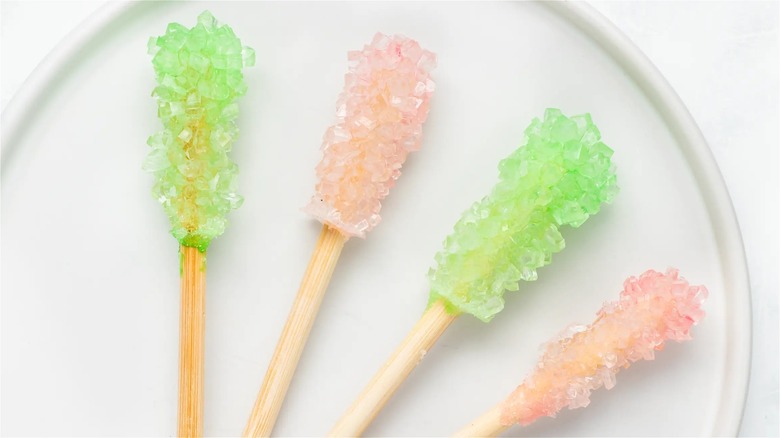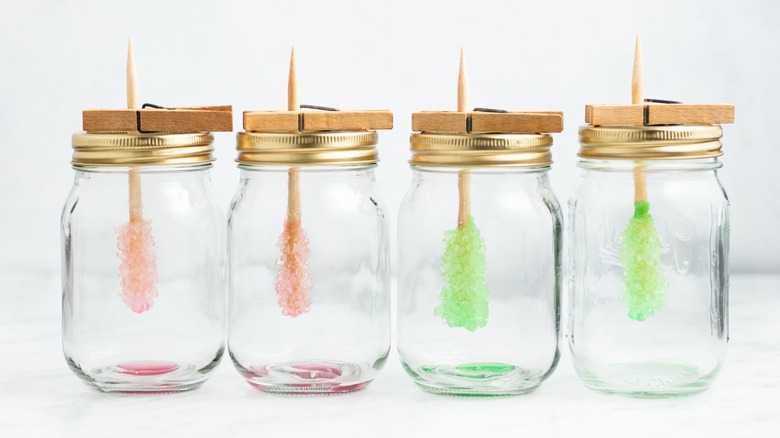Making Rock Candy Takes Longer Than Expected – But Is It Worth It?
As one of our best homemade food gifts for the holidays (along with treats like pumpkin spice macarons and peppermint bark), homemade rock candy is as fun to make as it is sweet to eat. While the recipe is relatively straightforward and doesn't call for any fancy gadgets or tools, the entire candy-making process can take some time to complete. You're looking at a prep time of about 25 minutes, but it can take from five to seven days to develop the crystals that make rock candy an aesthetically pleasing treat. While waiting a week might seem a bit preposterous, making rock candy at home can be a fun project for both kids and adults.
There's some interesting science behind rock candy, and everyone knows you can't rush the scientific process — no matter how badly you're craving sweets. Rock candy begins with dissolving sugar in water until you arrive at a saturated solution, meaning that the water isn't capable of absorbing any more. This begins a process known as nucleation, which is just a fancy way of describing how molecules move around and eventually begin clumping together. More and more molecules join the party over time, and this eventually leads to the crystallization that provides that signature rock candy shape.
Tips and tricks for perfecting homemade rock candy
Easily the most important element in the recipe, white sugar is typically used for making rock candy. (In case you're curious, here are some other types of sugar and ways to use them.) Striking the proper sugar-to-water balance is key to growing crystals, and a lack of crystal development typically means that you didn't use enough sugar. In this case, you can reheat the rock candy syrup and add more sugar until you achieve the proper consistency (which should be viscous and sticky).
Sugar and water are essential in rock candy recipes, but other elements make the treat even more whimsical. If you want to incorporate a fun flavor, adding a spice like cinnamon makes for a mildly spicy treat. There are also oils designed specifically for candy making that come in flavors like orange and anise (aka licorice flavor) that can offset the sweetness. It's also common to use some type of food dye in the recipe, which will give your candy a nice pop of color. Despite the time it takes, homemade rock candy is definitely a project worth pursuing.

